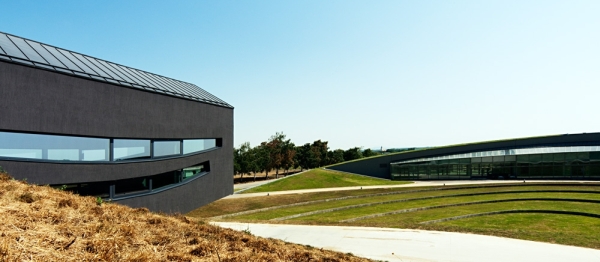In and Out
Ekler’s Contemporariness
Text: János Golda

Dezső Ekler: Szent Ilona Vinery, Somló, 2012, photo: Tamás Bujnovszky
By the 1970s it had become quite clear that the social revolution of classical Modernism and its ethics was vacated for good, designs by society engineers with a mission failed, and it was all about business. Form thus could not follow function slavishly any more, and the new eclectic teachings of modernism held a funeral feast over the agony of official Modernism decaying into formalism. Our common experience has changed into the horror vacui – the loss of architectural values and flatness, as opposed to the exuberance of the material world. The change of the political system devastated the foundations of the official architecture-design infrastructure which had undergone rapid decay from the 1980s on and – compared even to the neighboring countries – pushed architects unexpectedly and unprepared out to the domain of free enterprise both in Hungary and abroad. The 1990s was a decade of transformations, experiments and studies. As a result a new generation grew up which has proven to be competitive and able to find their ways internationally. However, everything had changed meanwhile: architecture turned into fashion, houses into objects, the city into a surface which can be regulated, form into trademark, facades into wrapping. In this new world of info-communication permeating and reinterpreting everything around us printed and electronic press has a completely different approach to architecture than any of the previous historical periods. Digital immigrants must start learning everything new from scratch, whilst young architects who are familiar with the virtual space and social media and thus built complex networks of nexus are to relearn perception and the art of presence. We all must understand what is happening to us right now and thus define the genuine and usable 21st-century paradigm of architecture.


